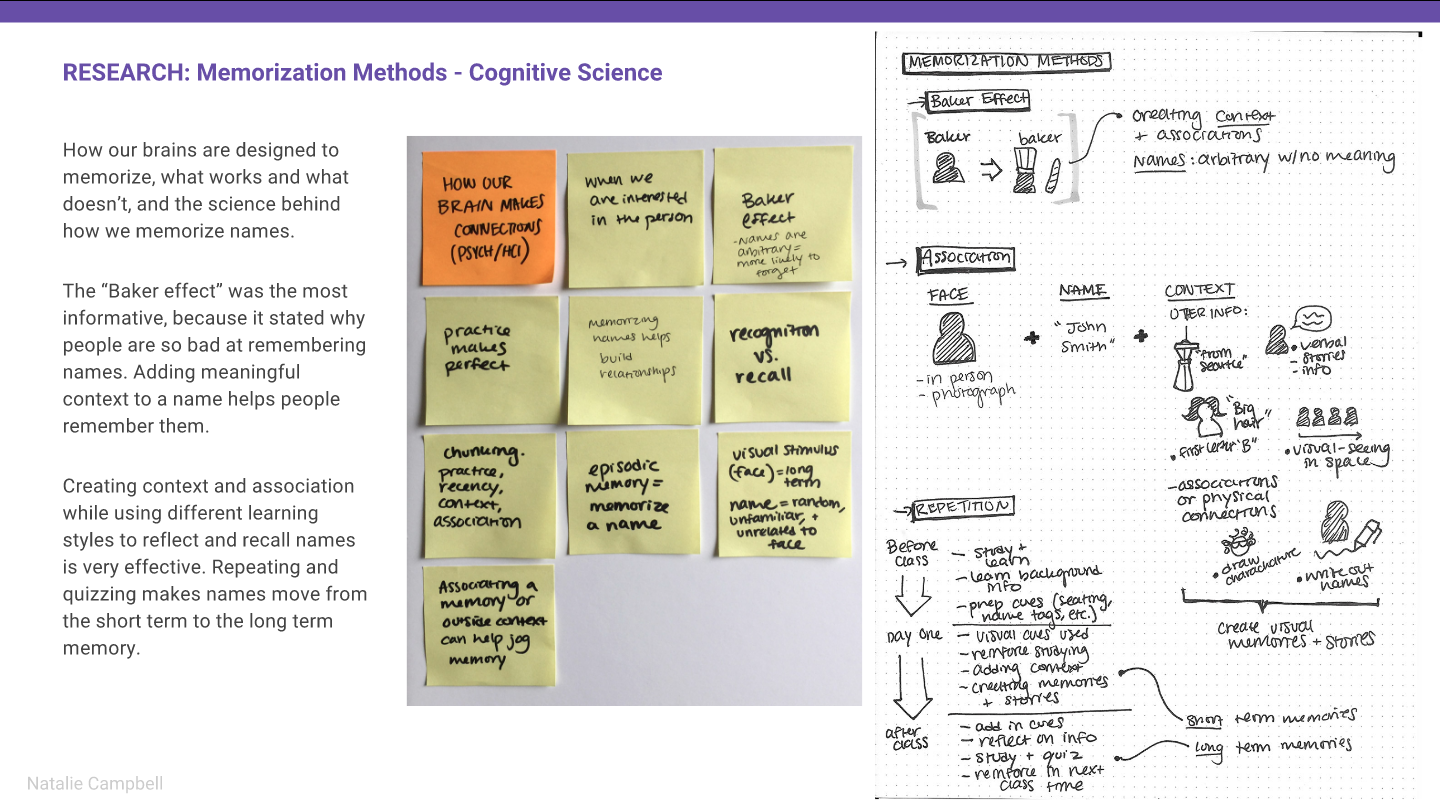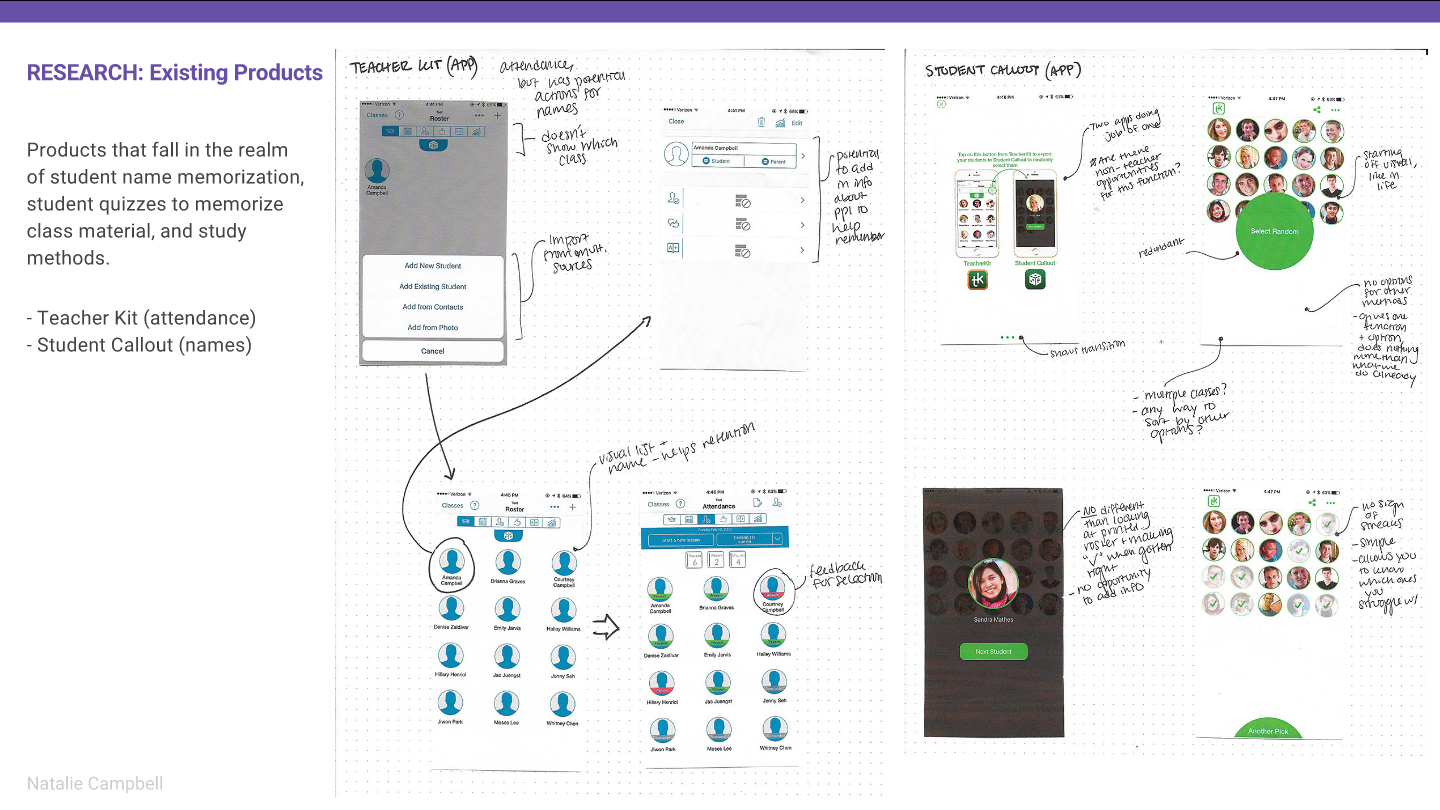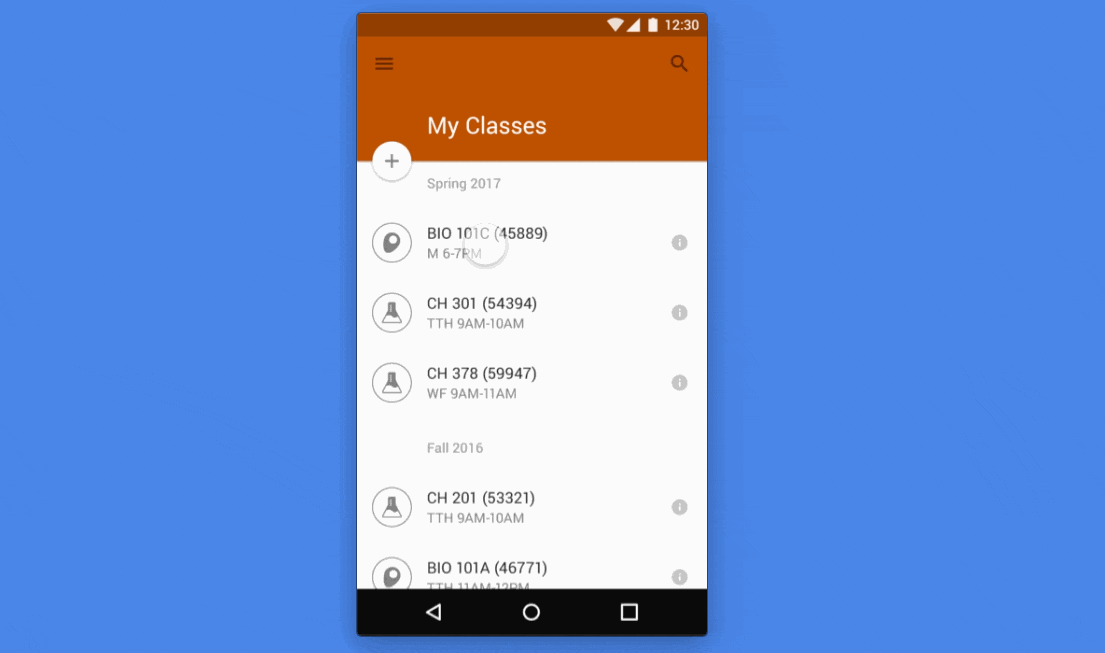Google Interaction Design Challenge (2017)
As part of the interview process at Google, I was asked to pick from three design challenge prompts and create an experience to solve one of these challenges, where I had to at least provide a high-fidelity mock for at least one step of this experience.
I was flown out to Mountain View, where I gave a presentation on this project and my portfolio.
PROJECT DETAILS
Date: 2017
Project Background: Google’s design challenge as a part of the interview process for a position as an Interaction Design in Mountain View
Design: Product, Visual
Role: Individual
The Prompt: “Names and Faces” At the beginning of each new semester or school year, teachers are faced with the challenge of remembering names for a large number of new students. Design an experience to help an educator match faces to names, with the goal of shortening the time needed to reach complete un-aided accuracy.
The result was a product called b/Baker, a digital product for professors to more effectively learn and remember the names of all of their students in a shorter amount of time.
It helps prep and reinforce a professor to learn and retain student names, no matter the size or kind of class, or what kind of learner the professor is (visual, auditory, kinesthetic, or linguistic). It utilizes different learning styles and ways of quizzing to help them learn student names. It takes the cognitive memorization methods that are proven to work and essentially stores them into an interface to keep that data for you.
Product Walkthrough
Scenario One:
Professor adds context to a student’s page.
This context will help a professor form a connection between name and face.

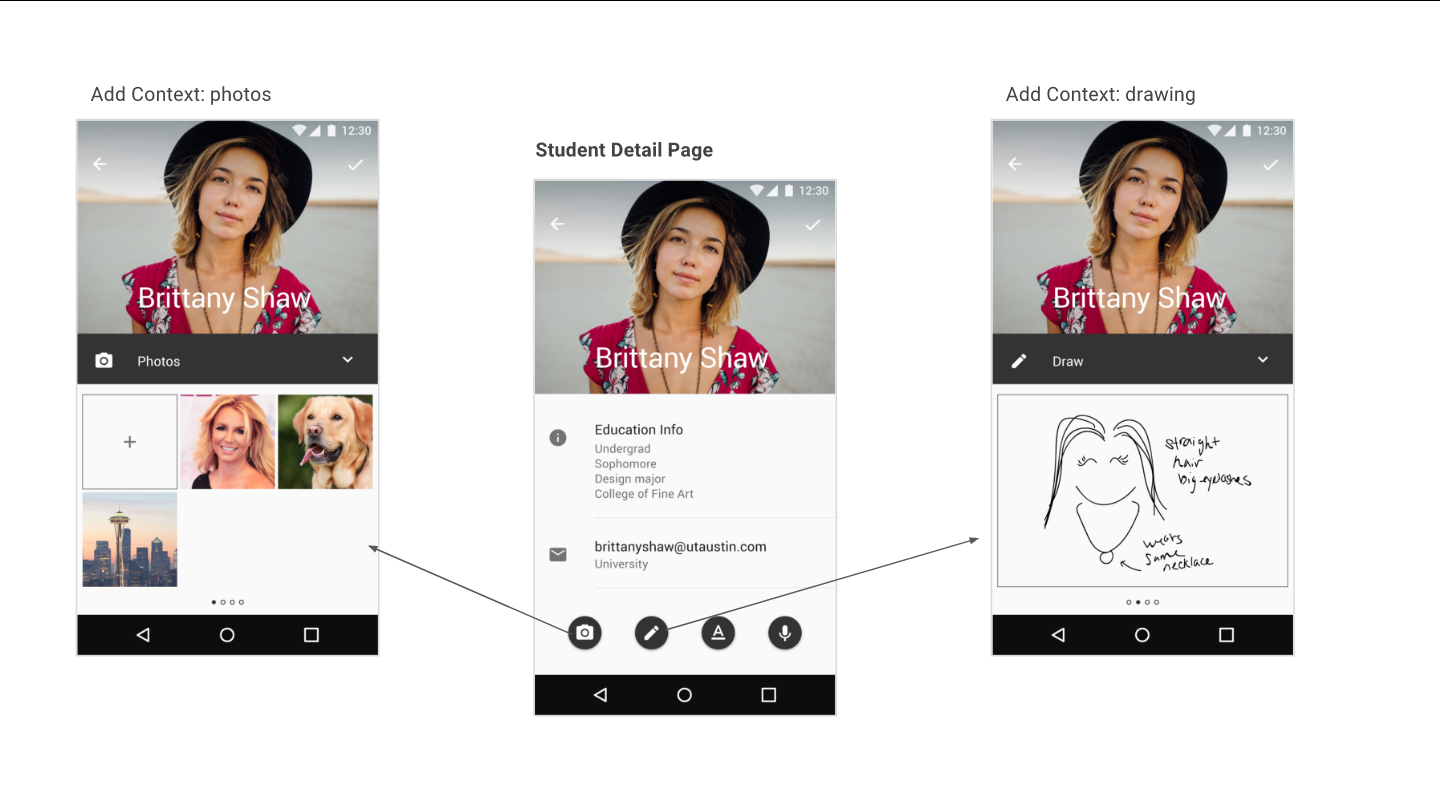
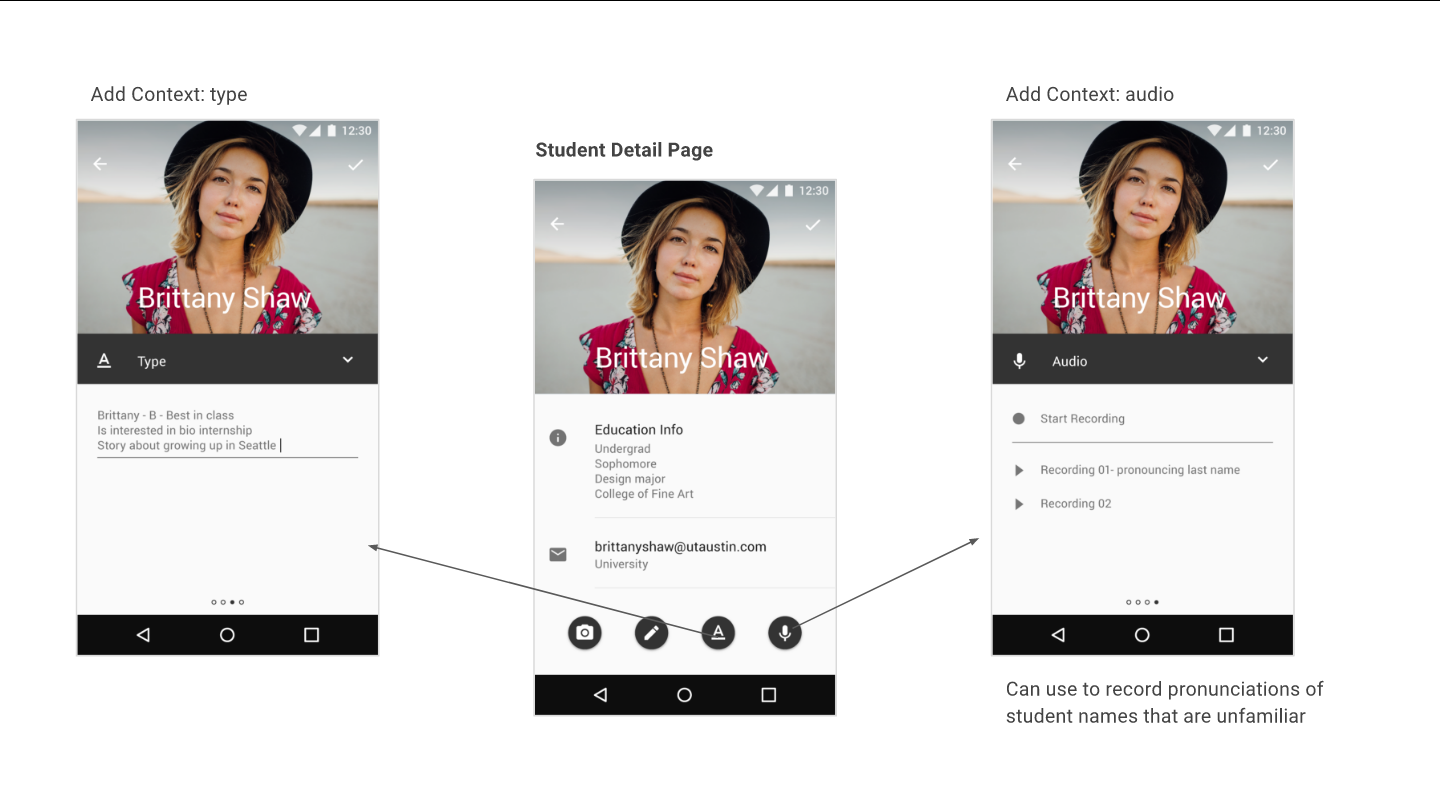
Scenario Two:
Professor quizzes themselves to learn student names.
Reinforcing and repeating will solidify names into the long term memory.


Research
Assumptions & Preliminary Ideas
Initial thoughts and questions after reading the prompt, before starting research.
Recognized what assumptions I had about how professors memorize names, how they feel about it, how students (including myself) feel about memorizing names, the difficulty of the process, and how successful they are.
Sketching what ideas, products, and methods that come to mind before starting research, and thinking of what other products could be utilized outside of just a phone/tablet interface: seating chart, class roster, student ID’s
Interviews and Memorization Methods
Interviewed a range of people of all ages and class sizes: Two college professors (large and small classes), a high school teacher (teaches large and small classes), a special education student teacher, and college teacher’s assistant
I learned that each teacher as a different method/methods for memorizing names, where some methods work for some but not for others, but overall it’s still an unpleasant experience and is a strain to go through.
Then researched name memorization techniques, cognitive science of memorization, and student methods of memorization.
EXISTING & ANALOGOUS PRODUCTS
Investigated existing products to help professors remember student names and student study apps.



